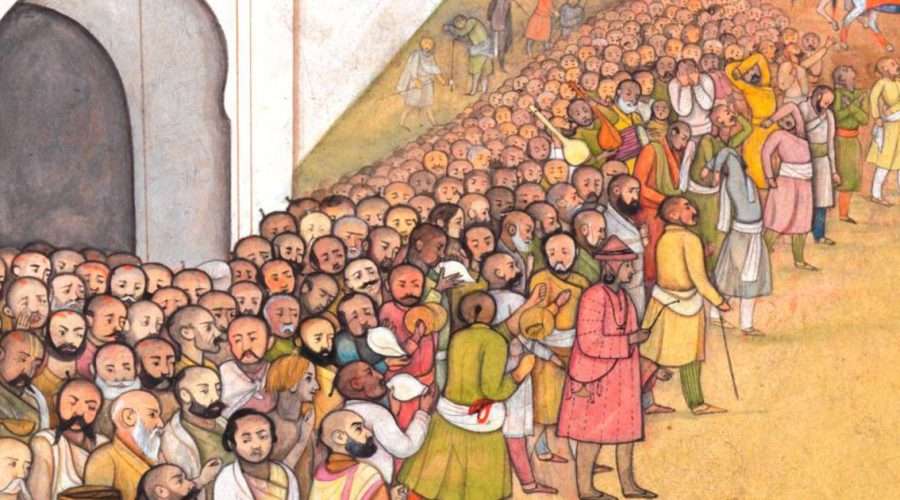Introduction
The Funeral Order of Painting, also known as a funeral portrait or memorial portrait, is a time-honored artistic tradition that holds immense cultural and historical significance. Throughout history, various civilizations and cultures have employed this art form to commemorate the lives of their deceased loved ones, immortalizing their memory through visually striking and emotionally evocative depictions. This article delves into the rich history and cultural importance of the Funeral Order of Painting, exploring its evolution, symbolism, and enduring impact on society.
The Origins of Funeral Order of Painting
The roots of the Funeral Order of Painting can be traced back to ancient civilizations, where it was initially practiced in ancient Egypt. The ancient Egyptians believed that an individual’s soul continued to exist in the afterlife, and these portraits were essential for guiding the deceased’s soul to the next world. Known as “mummy portraits,” these highly realistic and finely detailed portraits were placed over the mummified body to provide a recognizable face for the journey to the afterlife.
Similarly, the practice of memorial portraiture was prevalent in ancient Rome, where wealthy families would commission funerary portraits to commemorate their deceased members. These paintings were often displayed at funerals and later placed in family mausoleums or private homes as a way to remember and honor their ancestors.
Evolution and Cultural Significance
Over the centuries, the Funeral Order of Painting evolved and adapted to reflect changes in artistic styles, religious beliefs, and societal norms. During the Renaissance, for instance, the genre experienced a resurgence as artists sought to capture the individuality and personality of the departed. The popularity of funeral portraits continued to grow, becoming an integral part of funeral rituals across different cultures and regions.
In Asia, memorial portraiture became prominent during the Tang and Song dynasties in China, where they were included in elaborate funeral rituals to honor the deceased and ensure their continued presence in the family’s ancestral lineage. In Japan, the tradition of “kaimyo” involved painting posthumous Buddhist names on memorial tablets, along with the deceased’s portrait, further emphasizing the importance of art in commemorating the dead.
Symbolism and Meaning
Funeral Order of Painting holds significant symbolism, transcending mere representation. The art form goes beyond capturing a likeness; it aims to convey the essence of the departed’s life and their journey into the afterlife, connecting the living and the dead in a deeply emotional manner.
Each element of the portrait is imbued with meaning. The use of specific colors, gestures, and accessories can represent the deceased’s social status, achievements, and virtues. In some cultures, certain flowers or symbols are included to denote concepts like purity, eternity, or resurrection. Furthermore, the depiction of the deceased in their finest attire and with their prized possessions serves to honor their life’s accomplishments and affirm their importance in society.
Preserving Memories and Identity
One of the most significant aspects of the Funeral Order of Painting is its ability to preserve memories and maintain a connection with the departed. These paintings act as tangible links to the past, enabling future generations to remember and honor their ancestors. In societies where written records were scarce or non-existent, these portraits offered a unique visual representation of family history and heritage.
Moreover, funeral portraits serve as a way to maintain the identity of the deceased within the collective memory of a community. They ensure that the contributions and impact of individuals are not forgotten, keeping their stories alive for generations to come.
Contemporary Interpretations
In today’s world, the Funeral Order of Painting continues to find relevance, albeit with some modern adaptations. While traditional portraiture methods persist, digital technology and contemporary art styles have influenced new approaches to memorial art. Digital portraits, interactive installations, and multimedia tributes have emerged as alternative ways to honor the deceased and celebrate their lives.
Conclusion
The Funeral Order of Painting stands as a testament to the enduring power of art and its ability to commemorate life, transcend boundaries, and preserve memories across generations. From its ancient origins in Egypt to its widespread practice in various cultures throughout history, this art form has proven to be a poignant way to bid farewell to loved ones while ensuring that their legacies endure in the hearts of the living.
In a world where time may erode memories, the Funeral Order of Painting remains a powerful and everlasting tribute to the eternal connection between the living and the departed. It reminds us that through art, we can transcend mortality and create a bridge that unites the past, present, and future.
For more news click thebritaintimes.co.uk
